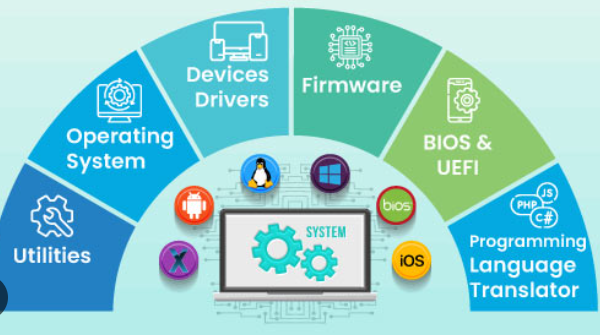
Types of Software Explained Simply: System, Application, Utility & More
In today’s digital world, software is everywhere — from the apps on your smartphone to the programs running silently in the background of your computer. But not all software is the same. Some help you browse the internet, others protect your files, and some simply help your computer turn on.
In this guide, we’ll break down the main types of software — explained in plain language, with real-life examples, comparisons, and visuals to help you understand how they work.
What Is Software?
Software is a set of digital instructions that tell a computer how to perform tasks. It is the opposite of hardware, which you can physically touch. While hardware is like the “body,” software is the “brain” that controls what the body does.
Main Types of Software
Software can be broadly categorized into the following types:
1. System Software
System software manages the core functions of your computer and acts as a bridge between hardware and other software.
Key Features:
- Runs in the background
- Controls hardware
- Loads before application software
Examples:
- Operating Systems: Windows, macOS, Linux, Android
- Device Drivers: Printer driver, graphics card driver
- Utilities: Disk cleanup, file manager, antivirus
Read More: What is System Software?
2. Application Software
Application software helps users perform specific tasks like writing, browsing, editing, or playing music.
Key Features:
- Designed for end-users
- Needs system software to run
- User-friendly interfaces
Examples:
- Word Processor: Microsoft Word, Google Docs
- Web Browser: Chrome, Firefox, Safari
- Media Player: VLC, Windows Media Player
- Design Tool: Canva, Photoshop
Explore: Application Software Explained
3. Utility Software
Utility software is a type of system software focused on optimizing, analyzing, or maintaining your device.
Key Features:
- Maintains performance
- Prevents or fixes issues
- Often comes pre-installed
Examples:
- Antivirus Software: Avast, Norton, Windows Defender
- File Manager: File Explorer, Finder
- Disk Tools: Disk Cleanup, Defragmenter
- Backup Software
4. Programming Software
Programming software is used by developers to create new software. It provides tools to write, test, and debug code.
Key Features:
- Meant for developers
- Supports different programming languages
- Doesn’t interact directly with end-users
Examples:
- Code Editors: Visual Studio Code, Sublime Text
- Compilers: GCC, Java Compiler
- Debuggers: GDB
- IDEs: Eclipse, IntelliJ IDEA
5. Middleware
Middleware is the “middle layer” that connects different applications or software components. It enables communication and data exchange between systems.
Key Features:
- Acts like a translator between apps
- Enhances compatibility
- Common in complex systems
Examples:
- Web servers
- Database middleware
- API gateways
6. Firmware
Firmware is specialized software programmed into hardware devices. It’s not stored on the hard drive but on a chip.
Key Features:
- Controls basic hardware functions
- Stored in ROM (Read-Only Memory)
- Runs before the OS boots
Examples:
- BIOS on computers
- Firmware in printers, routers, washing machines
Explore: What is Firmware?
How These Software Types Work Together
Here’s a simplified flow:
- You open Google Chrome (application software)
- Chrome runs on Windows (system software)
- Windows uses device drivers to access hardware
- An antivirus utility scans downloads in Chrome
- If Chrome updates, middleware may help with communication between services
- Your firmware helps the device boot and enables all of this to happen
Why It Matters
Understanding the types of software helps you:
- Choose the right tools for your needs
- Maintain and protect your device
- Grasp how technology works behind the scenes
Summary Table
| Type | Main Role | Common Examples |
| System Software | Runs the system | Windows, Linux, Device Drivers |
| Application | User tasks | Word, Chrome, Photoshop |
| Utility | Optimization & security | Antivirus, File Manager |
| Programming | Software creation tools | VS Code, Java, GCC |
| Middleware | Connects systems | Web servers, API middleware |
| Firmware | Controls hardware at startup | BIOS, Printer firmware, Router firmware |


